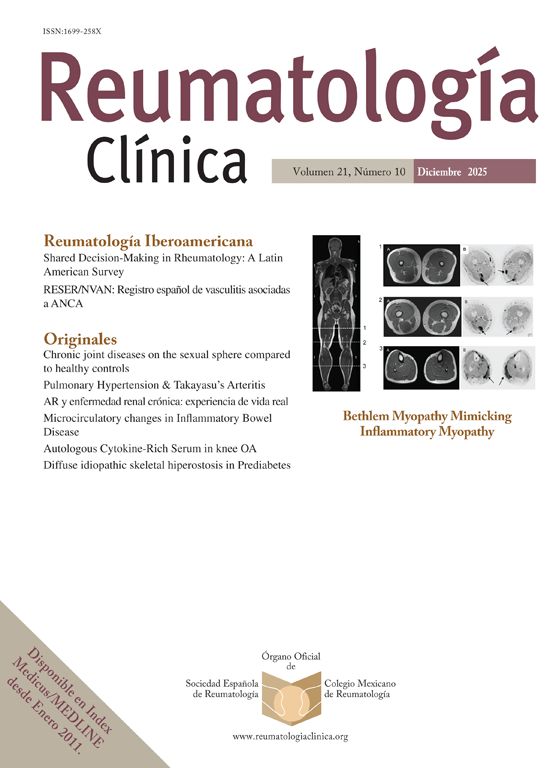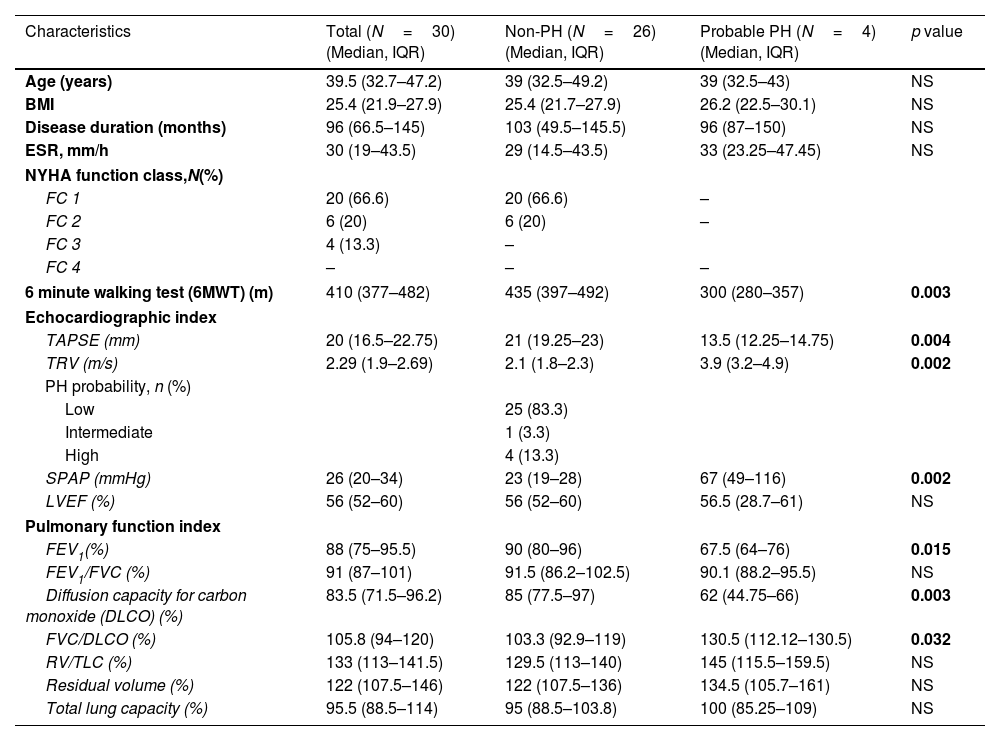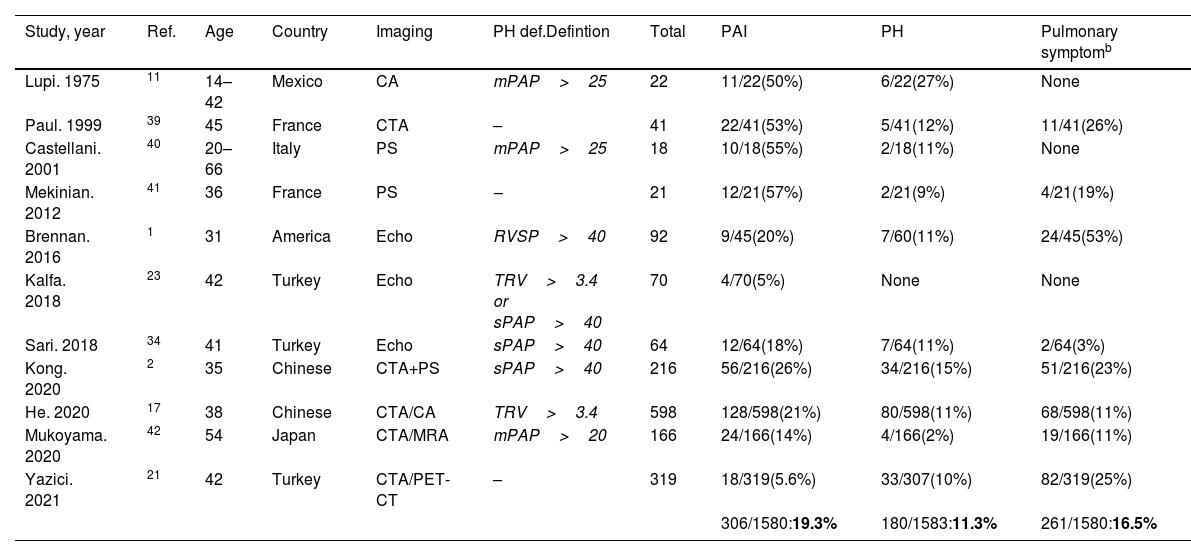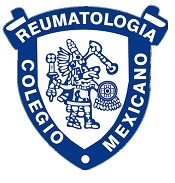In this study, we aim to evaluate the incidence of pulmonary hypertension (PH) using transthoracic echocardiography (TTE) in Takayasu arteritis (TA) patients.
MethodsThirty-four outpatient Takayasu arteritis patients underwent transthoracic echocardiography (TTE) following the ESC-ERS guidelines. A tricuspid regurgitation velocity (TRV) greater than 3.4m/s indicated a high probability of pulmonary hypertension (PH). The patients were categorized based on their New York Heart Association (NYHA) functional class (FC) and symptomatic status. All patients underwent a six-minute walk test (6MWT) and pulmonary function tests (PFT).
ResultsA total of 30 patients with a mean age of 40±9.3 years were enrolled in the study. Among these patients, four (13.3%) were met the criteria for high probability of PH (TRV: 4±0.92), with a mean systolic pulmonary artery pressure (SPAP) of 76.7±37. There were no significant differences in terms of age, disease duration, and erythrocyte sedimentation rate (ESR) between the PH and non-PH groups. However, there was a significant difference in tricuspid annular plane systolic excursion TAPSE/SPAP ratio between NYHA functional class (FC) Group 1 and Group 2 (1.2±0.16 vs 0.83±0.24, p=0.018). Additionally, TAPSE showed a correlation with forced expiratory volume in the first second/forced vital capacity (FEV1/FVC) (r=0.446, p=0.043).
ConclusionsPulmonary hypertension is a not uncommon complication in Takayasu arteritis (13.3% vs 11.3% in the literature). Considering the symptoms and functional capacity, lowering the threshold for initiating transthoracic echocardiography (TTE) evaluation may be beneficial for early risk stratification of pulmonary hypertension in patients with Takayasu arteritis.
En este estudio, pretendemos evaluar la incidencia de hipertensión pulmonar (HP) mediante ecocardiografía transtorácica (ETT) en los pacientes con arteritis de Takayasu (AT).
MétodosSe realizó una ecocardiografía transtorácica (ETT) a 34 pacientes ambulatorios con AT siguiendo las directrices de la ESC-ERS. Una velocidad de regurgitación tricuspídea (VTR) superior a 3,4m/s indicaba una alta probabilidad de HP. Los pacientes se clasificaron en función de su clase funcional (CF) de la New York Heart Association (NYHA), y se sometieron a una prueba de marcha de 6min (6MWT) y a pruebas de función pulmonar (PFP).
ResultadosUn total de 30 pacientes con una edad media de 40±9,3 años fueron incluidos en el estudio. Entre estos pacientes, 4 (13,3%) cumplían los criterios de alta probabilidad de HP (TRV: 4±0,92), con una presión arterial pulmonar sistólica (PAPS) media de 76,7±37. No hubo diferencias significativas en cuanto a la edad, la duración de la enfermedad y la velocidad de sedimentación globular (VSG). No hubo diferencias significativas en cuanto a edad, duración de la enfermedad y velocidad de sedimentación globular (VSG) entre los grupos con y sin HP. Sin embargo, se observó una diferencia significativa en el desplazamiento sistólico del plano del anillo tricuspídeo en la relación TAPSE/SPAP entre los grupos 1 y 2 de CF de la NYHA (1,2±0,16 frente a 0,83±0,24; p=0,018).
ConclusionesLa HP es una complicación no infrecuente en la AT (13,3 frente al 11,3% en la bibliografía). La reducción del umbral para iniciar la evaluación mediante ETT puede ser beneficiosa para la estratificación precoz del riesgo.









